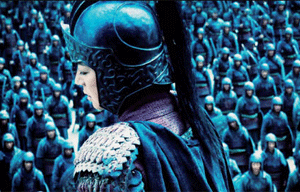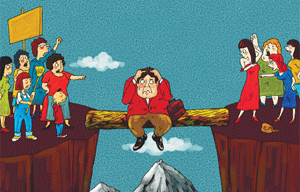Planet prepares for 7th billion inhabitant
Updated: 2011-10-27 08:04
By Cui Jia and Jiang Xueqing (China Daily)
|
|||||||||
Labor migration
The population divide between developed countries and developing countries also will produce significant changes.
According to the UN forecast, among the 2.3 billion people to be added to the world by mid-century, 97 percent will come from developing countries. Developed countries will suffer a severe labor shortage, and labor will migrate to them from developing countries, which are vigorous in economic growth.
The global issue of aging populations is set to affect China, too, by increasing pressure on pension and healthcare systems. China will experience dramatic population changes, especially in terms of aging and gender balance.
"By 2050, some 25 percent of the world's gray population will be from China, compared with 20 percent now," Yuan said.
China's labor population - people 15 to 59 years old - will fall from today's 940 million to 750 million. Meanwhile, senior citizens will increase from 178 million to 480 million, from 13.3 percent of the total population to 34 percent.
Despite the shift in its labor population, China will still have more than 900 million people available to work in 2025, Yuan said, so pressure in the job market will remain high.
"We'll still have a huge base of labor for a long time, just a little bit older," he said. "Given improved life and medical services, the old could still be physically active."
|
 A nurse takes care of newborns at No 1 People's Hospital in Xiangyang, Hubei province. China's family planning policy has slowed the rapid growth of population. [Gong Bo/Xinhua]
|
Gender balance
The sex ratio in China reached its peak at 120 - meaning 120 boys born for every 100 girls - in 2004. It stands at 118 now and is expected to drop to 115 by 2015.
The government has been trying to change people's minds about preferring sons over daughters.
"It still takes time for the sex ratio to fall to the normal level of 103-107," Yuan said. "When the generation born in the 1990s reaches its age of marriage and fertility, the relevant social problems will become more apparent.
"For example, a man will have difficulties in finding a wife; and male laborers will move into the industries that are traditionally dominated by the female due to oversupply of male labors."
Li Jing contributed to this report.











